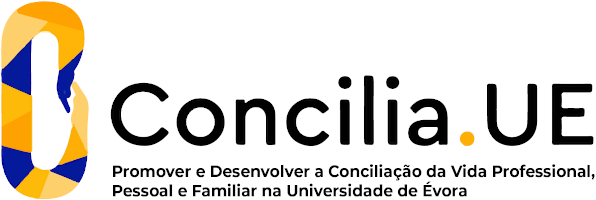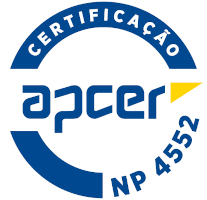2025
Statitistic and probability
Name: Statitistic and probability
Code: MAT14991L
6 ECTS
Duration: 15 weeks/156 hours
Scientific Area:
Mathematics
Teaching languages: Portuguese
Languages of tutoring support: Portuguese
Regime de Frequência: Presencial
Sustainable Development Goals
Learning Goals
1 Develop the ability to select and apply the most appropriate approach to obtain conclusions that assist decision making in contexts of uncertainty.
2 Being able to carry out a statistical study by adapting to new situations, and interpreting the results in a critical way.
3 Strengthen basic training in Probability and Statistics. applying the knowledge acquired to solve real problems.
4 Relate concepts acquired with other areas of mathematics.
5 Know the important probabilistic models in data modeling, know and know how to apply the basic principles of statistical inference, namely with the construction of confidence intervals and carrying out and testing hypotheses.
6 Understand the interdisciplinarity of the course and acquire the ability to work in a team.
2 Being able to carry out a statistical study by adapting to new situations, and interpreting the results in a critical way.
3 Strengthen basic training in Probability and Statistics. applying the knowledge acquired to solve real problems.
4 Relate concepts acquired with other areas of mathematics.
5 Know the important probabilistic models in data modeling, know and know how to apply the basic principles of statistical inference, namely with the construction of confidence intervals and carrying out and testing hypotheses.
6 Understand the interdisciplinarity of the course and acquire the ability to work in a team.
Contents
A General notions. Population and sample. Sampling techniques. Experience planning.
B Exploratory data analysis: organization and visualization of data; measures of central tendency, dispersion, asymmetry, flattening and concentration; correlation and linear regression.
C Probability concepts. Conditional probability and independence.
~
D. Discrete and continuous random variables: concepts of random variable, distribution function, probability mass function and density function; moments of a random variable.
E. Main discrete models and continuous models: Bernoulli proofs and the binomial model, proofs without replacement and the hypergeometric model, Poisson model, uniform model, normal model.
F. The Law of large numbers and the central limit theorem - Applications.
G. Some sampling distributions, Sampling distribution of the mean and proportion.
H Topics in Statistical Inference. Point estimation, interval estimation and hypothesis testing.
B Exploratory data analysis: organization and visualization of data; measures of central tendency, dispersion, asymmetry, flattening and concentration; correlation and linear regression.
C Probability concepts. Conditional probability and independence.
~
D. Discrete and continuous random variables: concepts of random variable, distribution function, probability mass function and density function; moments of a random variable.
E. Main discrete models and continuous models: Bernoulli proofs and the binomial model, proofs without replacement and the hypergeometric model, Poisson model, uniform model, normal model.
F. The Law of large numbers and the central limit theorem - Applications.
G. Some sampling distributions, Sampling distribution of the mean and proportion.
H Topics in Statistical Inference. Point estimation, interval estimation and hypothesis testing.
Teaching Methods
Classes in theoretical-practical format, expository of content, articulated with the presentation of examples and exercises. The presentation moments alternate with the presentation of applications and discussion on solving associated problems, particularly arising from real situations, involving data collection. Applications can be proposed and presented by students. Moments to perform exercises in groups and individually. Calls to the board for students to present concepts and solve problems to their colleagues. Whenever possible, the use of software with a greater focus on Excel is preferred. Therefore, the recommendations and guidelines of the pedagogical model of the university of Évora are taken into consideration.
Assessment
Assessment presupposes a continuous assessment regime or a final exam assessment regime.
Continuous assessment will consist of several short moments - questions in class, these assessment moments being simultaneously assessment and practice/learning. They can be held every week or with a schedule to be agreed by the teacher at the beginning of the academic year. These moments must be more than 5 throughout the semester (1/3 of the total number of weeks).
In addition to the questions in class, a final written test and group work will be carried out, focusing on a statistical study.
Each question in will have a fixed price (e.g. 2 points). The final grade for questions in is obtained by adding the partial grades for each question and normalized to 20 points. The weight of questions in will be 30% of the final grade. Group work will account for 30% of the final grade. The final test will weigh 40% of the final grade.
Continuous assessment will consist of several short moments - questions in class, these assessment moments being simultaneously assessment and practice/learning. They can be held every week or with a schedule to be agreed by the teacher at the beginning of the academic year. These moments must be more than 5 throughout the semester (1/3 of the total number of weeks).
In addition to the questions in class, a final written test and group work will be carried out, focusing on a statistical study.
Each question in will have a fixed price (e.g. 2 points). The final grade for questions in is obtained by adding the partial grades for each question and normalized to 20 points. The weight of questions in will be 30% of the final grade. Group work will account for 30% of the final grade. The final test will weigh 40% of the final grade.
Teaching Staff
- Carlos Correia Ramos [responsible]





















